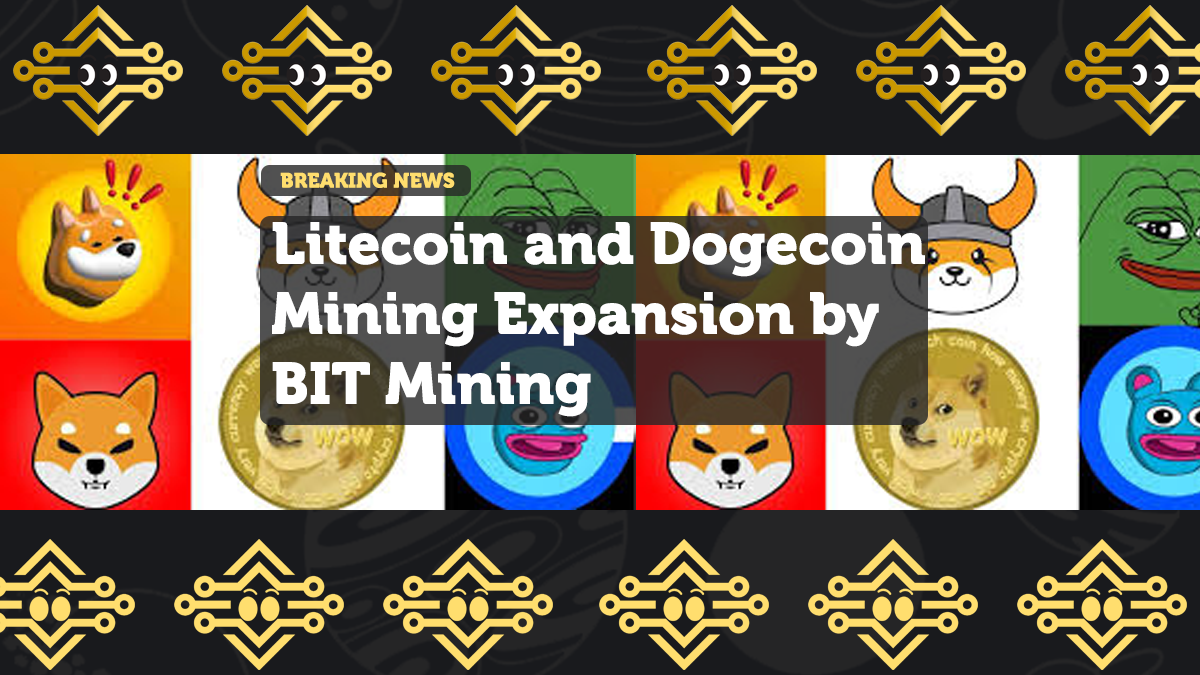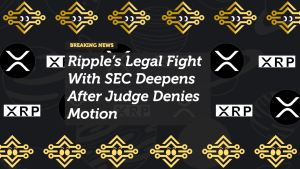
Litecoin and Dogecoin Mining Expansion by BIT Mining
As the cryptocurrency market heats up, BIT Mining, one of the industry’s leading players, is doubling down on its efforts to mine Litecoin (LTC) and Dogecoin (DOGE). These altcoins, often overshadowed by Bitcoin and Ethereum, are gaining traction due to their rising popularity, profitability, and ties to memecoin culture.
But what’s driving BIT Mining’s strategic shift, and how is this expansion reshaping the mining landscape? In this blog, we’ll explore the technological advancements enabling efficient mining, how Litecoin and Dogecoin are capitalizing on broader market trends, and the environmental and regulatory challenges facing the industry.
1. BIT Mining’s Focus on Litecoin and Dogecoin
BIT Mining’s decision to increase its focus on Litecoin and Dogecoin mining is rooted in the growing profitability of these assets and their strategic importance in the crypto ecosystem.
Why Litecoin and Dogecoin?
- Shared Mining Algorithm: Litecoin and Dogecoin both use the Scrypt algorithm, allowing miners to simultaneously mine both coins. This dual-mining capability significantly increases profitability.
- Rising Popularity:
- Litecoin, often referred to as the “silver to Bitcoin’s gold,” has maintained its relevance as a fast and low-cost alternative for payments.
- Dogecoin, originally a joke cryptocurrency, has become a cultural icon thanks to Elon Musk’s endorsements and memecoin mania.
- Market Opportunities: The recent crypto bull run has increased demand for altcoins, driving up their prices and making mining operations more lucrative.
By ramping up operations, BIT Mining is positioning itself to capitalize on these trends and diversify its mining portfolio beyond Bitcoin.
2. Technological Advancements in Mining Hardware
BIT Mining’s expansion is supported by next-generation mining hardware that improves efficiency and reduces operational costs.
Key Innovations Driving Efficiency:
- Scrypt-Specific Mining Rigs:
- The latest Scrypt miners, such as Bitmain’s Antminer L7, are designed specifically for Litecoin and Dogecoin, delivering higher hash rates and lower energy consumption.
- Improved Cooling Systems:
- Advanced cooling technologies help reduce energy costs while prolonging the lifespan of mining equipment.
- AI-Driven Optimization:
- BIT Mining is reportedly integrating AI-based algorithms to optimize mining efficiency, ensuring maximum output with minimal waste.
These advancements are critical in maintaining profitability as mining difficulty increases and energy prices fluctuate.
3. Litecoin and Dogecoin in the Broader Market Surge
Litecoin’s Resilience and Growth:
- Adoption Trends: Litecoin is gaining traction as a fast and cost-effective payment solution, with increasing adoption by merchants and payment platforms.
- Upcoming Halving Event: Scheduled for 2025, Litecoin’s next halving could further reduce supply and drive up prices, making mining even more profitable.
Dogecoin’s Memecoin Momentum:
- Cultural Appeal: Dogecoin remains a favorite among retail investors, thanks to its vibrant community and pop-culture endorsements.
- Integration in Payments: Major companies like Tesla are experimenting with accepting Dogecoin for purchases, adding real-world utility.
By expanding Litecoin and Dogecoin mining, BIT Mining is tapping into the unique appeal of these altcoins while benefiting from the broader crypto bull market.
4. Environmental Impact and Regulatory Challenges
As BIT Mining ramps up operations, questions about the environmental impact of mining and potential regulatory hurdles are gaining attention.
Environmental Concerns:
- Energy Consumption:
- While Litecoin and Dogecoin mining is less energy-intensive than Bitcoin’s Proof-of-Work (PoW), large-scale operations still require significant power.
- Carbon Footprint:
- The reliance on non-renewable energy sources for mining can contribute to greenhouse gas emissions, raising sustainability concerns.
Addressing the Challenges:
- Renewable Energy Integration:
- BIT Mining is reportedly exploring renewable energy sources, such as solar and hydroelectric power, to reduce its carbon footprint.
- Efficient Hardware:
- Upgraded mining rigs with better energy efficiency can minimize environmental impact while maintaining profitability.
Regulatory Challenges:
- Governments worldwide are increasing scrutiny of crypto mining operations, with some countries imposing restrictions on energy use or outright bans on mining.
- BIT Mining’s ability to comply with local and international regulations will be crucial for sustaining its growth.
By proactively addressing these challenges, BIT Mining can align itself with industry-wide efforts toward more sustainable and compliant mining practices.
5. Opportunities and Risks for Litecoin and Dogecoin Mining
Opportunities:
- Dual Mining Revenue:
- The ability to mine both Litecoin and Dogecoin simultaneously provides a steady revenue stream, even during market fluctuations.
- Rising Market Demand:
- Increased interest in altcoins ensures ongoing profitability, especially as prices rise during the current crypto bull run.
- Memecoin Culture:
- Dogecoin’s enduring popularity among retail investors and social media communities creates a supportive market environment.
Risks:
- Market Volatility:
- Altcoins like Dogecoin are highly speculative, and sudden price drops could impact mining profitability.
- Increasing Difficulty:
- As more miners enter the network, mining difficulty will rise, requiring further hardware upgrades to remain competitive.
- Regulatory Crackdowns:
- Stricter energy usage regulations or mining bans in key markets could pose operational risks for BIT Mining.
While the opportunities are significant, BIT Mining must navigate these risks carefully to ensure sustainable growth.
Conclusion: A Strategic Bet on Altcoin Mining
BIT Mining’s decision to expand Litecoin and Dogecoin mining operations reflects the growing profitability and relevance of these altcoins in the broader crypto market. With advancements in mining hardware, rising altcoin demand, and the ability to mine two assets simultaneously, BIT Mining is well-positioned to capitalize on this trend.
However, the industry faces challenges, including environmental concerns and regulatory scrutiny, which must be addressed to sustain growth. By integrating renewable energy and maintaining compliance, BIT Mining can set a benchmark for sustainable and responsible mining practices.
As Litecoin and Dogecoin continue to thrive amid the crypto market surge, this expansion underscores the strategic importance of altcoins in a rapidly evolving industry.
For those tracking the next big trends in crypto mining, BIT Mining’s move is one to watch.
FAQs
1. Why is BIT Mining focusing on Litecoin and Dogecoin?
BIT Mining is leveraging the dual-mining capability of Litecoin and Dogecoin, driven by their rising profitability and market demand.
2. What makes Litecoin and Dogecoin mining unique?
Both altcoins use the Scrypt algorithm, allowing miners to mine both coins simultaneously, increasing efficiency and revenue.
3. How is BIT Mining addressing environmental concerns?
BIT Mining is exploring renewable energy sources and using efficient mining hardware to reduce its carbon footprint.
4. What are the risks of mining Litecoin and Dogecoin?
Key risks include market volatility, rising mining difficulty, and potential regulatory challenges related to energy use and compliance.
5. Can Litecoin and Dogecoin sustain their popularity?
Yes, Litecoin’s real-world adoption and Dogecoin’s cultural appeal position them as enduring players in the altcoin market.
For more insights into crypto mining trends, visit CryptoLiveLeak.org!
















